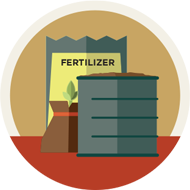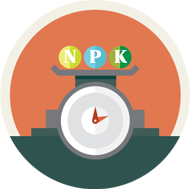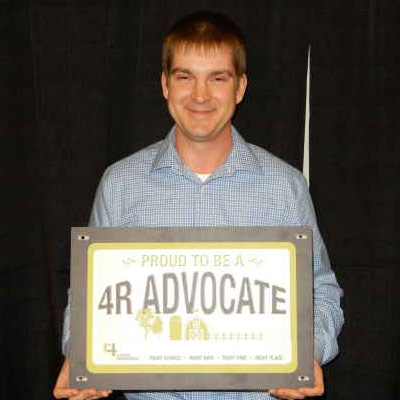
Nutrient Management
The 4Rs of Nutrient Stewardship
By implementing 4R nutrient stewardship practices, you optimize the nutrients you apply to maximize plant uptake and minimize field losses. Using the 4Rs allows you to keep the nutrients in the root zone and available when the crop needs them the most during the growing season.
What is 4R Nutrient Stewardship?
Watch this video to learn more about 4R nutrient stewardship practices for your farm that will improve water quality and soil health.

Right Source
Matches fertilizer type to crop needs.
- All fertilizer sources applied have guaranteed or known analysis
- Use controlled, slow-release or stabilized nitrogen blends
- Apply secondary and micronutrients based on soil and tissue tests

Right Time
Make nutrients available when crops need them.
- Split-apply nitrogen to increase availability
- No phosphorus applied to frozen or snow-covered soils
- Apply fall nitrogen when soil temperatures are consistently below 50 degrees at a 4-inch depth

Right Rate
Matches amount of fertilizer type to crop needs.
- Perform a nutrient budget to account for all inputs and harvest removal
- Utilize regular soil sampling to determine fertilizer rates
- Use variable-rate applications based on grid sampling

Right Place
Keeps nutrients where crops can use them.
- Manage fields based on zone maps
- Use precision guidance technology for accurate applications
- Incorporate broadcast-applied phosphorus fertilizers
Learn More About 4R Nutrient Stewardship Practices
The right time for nutrient stewardship is right now. Get more information about 4R nutrient stewardship best practices.
Learn More
4R Plus educational modules developed by The Fertilizer Institute, Natural Resources Conservation Service, International Plant Nutrition Institute and Iowa State University. There are CCA CEUs tied to each module.

"I’ve been using the 4Rs for some time. I’ve increased my yields by utilizing nutrients more efficiently. I’m able to reduce nutrient runoff by applying them when the crop is ready to uptake them. I also use split-applied nitrogen because I have many soil types and some cannot hold a large amount of nutrient at once. Corn yields have increased by 25–30 bushels/acre using the 4Rs. In 2015, one field averaged above 250 bushels for the first time."
Darin Stolte, corn, soybean and alfalfa farmer
2016 4R Advocate award winner, Jones County, Iowa
Iowa’s Nutrient Reduction Strategy
Find out how the Iowa Nutrient Reduction Strategy started, how it has become a model for other states and why Iowa recognized the importance of leading a voluntary and science-based approach to reduce nutrients in Iowa waters and the Gulf of America in Part 1 of a five-part video series from the Iowa Nutrient Research & Education Council.
4Rs Help Iowa Farmers Reach Their Nutrient Management Goals
Emily Doyle, a precision ag specialist and farmer from Tama County, Iowa, says using the 4Rs of nutrient stewardship – right place, right source, right rate, right time and right place – allows farmers to keep nutrients in the root zone and available when the crop needs it the most during the growing season.
Advantages of Using 4R Nutrient Stewardship Practices
- Crop fertilization program consisting of right fertilizer source, applied at the right rate and right time and in the right place.
- An efficient, effective, science-based use of plant nutrients to achieve agronomic, economic, social and environmental benefits.
- Optimized yield with reduced nutrient losses from the field by matching crop requirements and nutrient supply.
- Proper nutrient management promotes crop growth and improves soil health.
- Enhanced soil organic matter levels by producing more root and crop residue biomass.
- Maximize the ability of the soil to provide all essential nutrients in adequate amounts relative to plant need.
- Efficient use of water through the combined interaction of soil, nutrients and water.
- Efficient plant nutrient uptake and reduced loss to the environment by keeping nutrients in the root zone.
- Maximize fertilizer ROI by minimizing nutrient losses and increasing productivity.
- Framework encourages discussion between farmers and crop advisers about improving fertilizer management practices.
4R Nutrient Stewardship Resources
For more information about the 4R nutrient stewardship, go to Nutrient Management Stewardship or Iowa State University Extension.
For more practices to help your nutrient management and conservation efforts, visit our Resources page.
